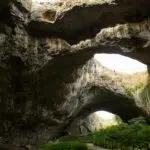Caves and Karst Day, celebrated on June 6, is gradually becoming a significant event in the United States, and with good cause. The value and influence of cave and karst landscapes on the genetic make-up of the earth as a whole are utterly mind-boggling as more cave enthusiasts across the world explore these underground sites of wonder and beauty. But there’s a lot more to cave exploration than meets the eye. Caves and karst maintain natural diversity both above and below the earth and are home to many of the planet’s most complex and unique ecosystems. The constant flow of water through bedrocks creates a Karst. As a result, sinking streams, caverns, springs, and other unique elements that make caves intriguing and magnificent are formed.
History of Caves and Karst Day
While there is little doubt that caves have existed since the dawn of time, cave excavation has revealed exactly how essential caves have been to mankind for eons. It is estimated that the earliest known cave painting in Europe dates back to some 64,000 years ago, making it the oldest known cave art in Europe.
The United States is home to four of the world’s ten longest caverns, and karst aquifers provide 40 percent of the country’s drinking water, making National Caves and Karst Day a priceless national treasure. The country also has over 90 exhibit caves with some loaded with stone tools and projectile inventions dating back nearly 10,000 years. Not to mention the bones and fossils of prehistoric animals found in some. The United States is also home to the world’s longest cave system, the Mammoth Cave.
The Mammoth Cave National Park was founded on July 1, 1941, and it is over 420 miles long, about double the length of Mexico’s second-longest cave system, known as the Sac Actun underwater cave.
In 1797, a hunting trip led by John Houchin or his brother Francis Houchin is said to have led to the discovery of Mammoth Cave by Europeans for the first time.
Mining of saltpeter for gunpowder production during the War of 1812 in Mammoth Cave and Bedeilhac Cave’s World War II hangar for French and German aircraft in Bedeilhac Cave are examples of more contemporary history-making roles played by caves.
As technology accelerated cave discovery in the United States, the National Caves Association voted to designate June 6, 2017, as National Caves and Karst Day.
Hundreds of caverns are open to tourists all around the world, many of which are part of UNESCO World Heritage sites or Global Geoparks. Every year, approximately 150 million tourists visit caves, providing vital support to many national economies.
Caves and Karst Day timeline
Cave digging leads to the discovery of prehistoric animal fossils and bones.
A hunting expedition by one of the Houchin brothers led to the discovery of the world's longest cave.
Gunpowder is produced from the mined saltpeter, using cave bat excrement.
The Swiss army builds 'retablierstollen' as storage facilities for aircraft during World War II.
The National Cave Association declares June 6 as a National Caves and Karst Day.
Caves and Karst Day FAQs
Which is the oldest cave in the world?
The Jenolan Caves is the oldest cave system in the world currently discovered. The cave has been estimated to have been in existence for a minimum of 340 million years.
What is the difference between karst and a cave?
A cave is a vast, naturally-occurring hollow produced underground, or on the face of a cliff or hillside, whereas karst is a type of topography created by the breakdown of soluble rocks like limestone, dolomite, and gypsum. It is distinguished by subsurface drainage networks, sinkholes, and caves.
How many caves are in Kentucky?
There are more than 130 known caves in Kentucky, U.S.A.
Why are caves important to the earth?
Knowing caves and karst processes is critical for preserving our water supplies from pollution and overuse, as well as understanding how water moves through karst aquifers. Caves are a valuable resource for hydrogeologists because they allow them to study karst groundwater systems from within.
Which country has the most caves?
Slovakia has over 6,200 caves with more being discovered.
Caves and Karst Day Activities
Take a tour
On Caves and Karst Day, visit any of the fascinating caverns strewn across the United States and discover the hidden treasures of an ever-expanding underworld. It is the ideal opportunity to have wild fun while also learning about the earth, with newly discovered cave passageways, streams, lakes, and even a variety of species.
Spend time with family
If you're looking for the next holiday to make lasting family memories, visiting any of the wonderful caverns in the United States for Caves and Karst Day should be at the top of your list. It is generally an amazing experience for kids, and it helps develop their understanding of the earth's composition from an early age.
Join an exploration event
Kids can also participate in the Junior Cave Scientist activity book which when completed earns the participant the Junior Cave Scientist title! Cave exploration is much more enjoyable when accompanied by a professional tour guide who can find safe passages and spot hidden karst landscapes.
5 Mind-blowing Facts About The Mammoth Cave
Slaves were the first to explore it
Slaves did the majority of the mapping at Mammoth Cave.
Mummies and skeletons litter the Mammoth
Although the actual number of deaths is unknown, Mammoth Cave is regarded as "grand, gloomy, and peculiar."
It’s been a tourist site for centuries
It is estimated that public tourism began at Mammoth Cave in1816, with over 4,000 visitors per day during peak seasons.
It is home to several rare species
The cave system is home to more than 12 unusual species, such as the rare Albino Shrimp, Southern Cave Fish, Kentucky Eyeless Cave Shrimp, and Indiana Eyeless Crayfish.
The Mammoth’s structure is unrivaled
Mammoth Cave was dubbed a World Heritage Site by UNESCO, recognizing the labyrinth as a unique type of cave system incomparable to any other cave in the world.
Why We Love Caves and Karst Day
They are historical repositories
Caves teach researchers a lot in ways you may not know. Historical weather trends stretching back hundreds of millions of years are uncovered by analyzing shattered formations. Universities have collaborated with privately-owned caverns to discover how microorganisms may be used to generate novel antibiotics and cancer treatments.
They are priceless sources of natural resources
Many of the planet's most diverse, essential, and unusual ecosystems can be found in caves and karst, supporting ecological variety both above and below ground. The world's most important cultural and archaeological sites are frequently discovered in karstic and non-karstic caves. They are also used to research the purification processes that rain and surface water go through to better understand how to safeguard other water resources.
They contribute majorly to tourism
Many caves across the United States welcome an influx of tourists over the summer, from family vacations to exploratory study by cave enthusiasts. Cavern tours typically consist of pathways that run through large rooms and twisting corridors that go as deep as 200 feet below ground level.
Caves and Karst Day dates
| Year | Date | Day |
|---|---|---|
| 2026 | June 6 | Saturday |
| 2027 | June 6 | Sunday |
| 2028 | June 6 | Tuesday |
| 2029 | June 6 | Wednesday |
| 2030 | June 6 | Thursday |























